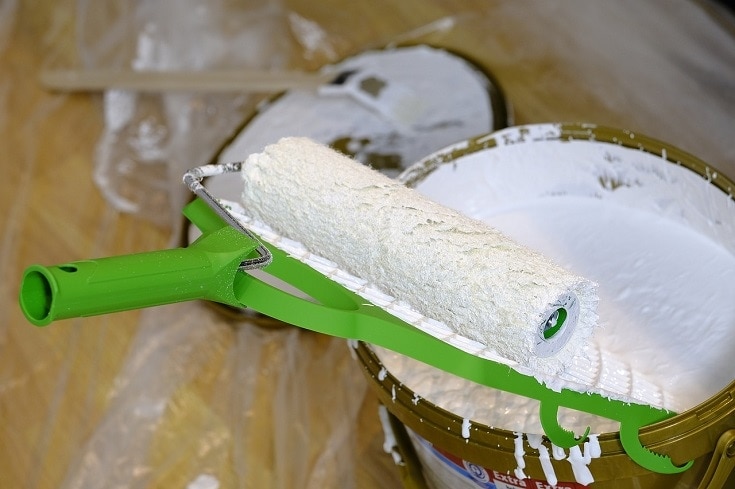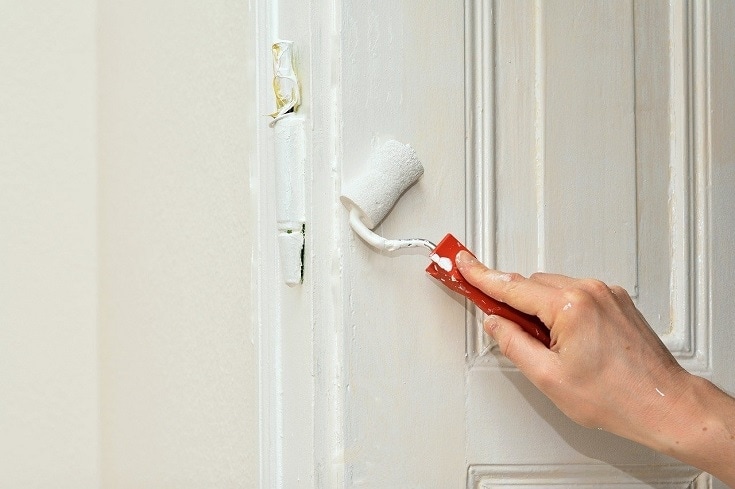How Many Coats of Primer Do You Need for Different Surfaces?
-
- Last updated:

If you’ve ever attempted to paint directly over a wall or surface, you might have experienced the disappointment of waiting for your paint to dry, only to discover you can still see the old paint or imperfections you were attempting to cover up. Covering any given surface with a coat of primer is an essential step in the painting process. But how many coats of primer does each type of surface need? Is one coat going to cut it, or do you need to double down?
In truth, different surfaces will have different requirements. There’s no one size fits all rule that we can apply to primer. So, in this article, we’re going to take a look at several different surfaces you might be painting to see how many coats of primer each will require before you start putting down the paint.

Bare Interior Walls
When painting bare interior walls, you’re generally painting over drywall or plaster. When the drywall is new, it’s going to be very absorbent. The first coat you put on fresh drywall is going to look very patchy as different spots absorb different amounts of paint. Your second coat will help substantially. So, when painting bare interior walls, it’s best to err on the side of caution and apply two coats of primer before starting to apply your paint.
Painted Interior Walls (Light Colors)

Once an interior wall is painted, the drywall is no longer a sponge the way that fresh drywall is. It won’t be absorbing a large volume of paint or primer. So, you can usually get away with applying fewer coats, though it’s highly dependent on the color that the wall is currently painted. If you’re painting over a light-colored interior wall, something like white, cream, or swiss coffee, then you’ll find success after using just one coat of primer.
Painted Interior Walls (Dark Colors)
If the interior wall you’re trying to paint is already painted in a dark color, you’re going to have a much harder time getting proper coverage. For these walls, you’re definitely going to need to apply two coats of primer before you start trying to paint. If you’re attempting to paint a light color over a wall that’s currently dark, even two coats of primer might not entirely cover the dark color beneath.
Green Board Drywall
Green board drywall is similar to standard drywall, but it’s meant for use in places where moisture is going to be a problem, such as in showers. The rules for painting green board drywall are typically the same as regular drywall. You’ll want to apply two solid coats of primer before attempting to paint since the drywall is so absorptive. The first coat will likely leave the drywall looking patchy, but the second coat should smooth things out and prepare the drywall for paint.
Bare Wood
Like bare drywall, bare wood is very porous and will absorb a lot of the primer you initially coat it with. As such, you’ll need to apply two thick coats if you want to get good coverage with your paint. This rule of thumb applies to all types of bare woods, including plywood, particleboard, hardwoods, softwoods, trim, cabinets, and everything in between.
Painted Wood

Once wood has been painted, it loses a lot of its absorbency. This means that you won’t need to apply as much primer to get a clean coat of paint. If the wood has been painted with a light color, you might not even need to apply primer to repaint it. The light-colored paint basically acts like a coat of primer, providing an even surface for your paint to adhere to. But if the wood has been covered with a dark paint, you’ll want to primer it with two good coats before painting.
Masonry
Similar to wood, unpainted masonry can absorb a surprising amount of paint or primer before it’s sealed. If you attempt to paint raw masonry, you’ll go through quite a bit before it turns out anything close to smooth. As such, we recommend coating any masonry with primer twice before you try to paint it. After the second coat of primer, you should notice that it’s far less patchy once it dries than the first coat turned out. This is a good indication that it’s ready to accept paint.
If the masonry you’re painting is already painted in a light color, then you might not need primer. But if you’re painting over masonry that’s already painted in a darker color, you’ll need one, possibly two coats of primer to cover it before painting.
Metal
When painting metal, a lot depends on the finish of the metal. If you’re painting metal with a smooth, polished finish, you’re going to have a difficult time getting paint to properly adhere, which can result in a streaky, stringy looking finish. On the other hand, a rougher metal will tend to paint much easier.
For smooth metals, you’ll want to apply two coats of primer to get an even finish. But rougher metals that accept the primer more easily can usually be coated once with primer and then painted.
Covering Over Stains
Depending on the stain you’re attempting to cover, it might only need one coat of primer, though it might need two. Lighter stains are often easier to cover, so a single coat of primer plus a coat of paint will usually do it. But if it’s a darker stain, such as ink or coffee, you might need to hit it twice with primer before you coat it with paint.
Also, try to get a stain-blocking primer when covering over stains. This can help to really hide the stain and might reduce the number of coats you need to apply.
When to Skip Primer

While primer is often considered an essential step in painting, it’s not always necessary. For instance, you could be painting over an interior wall that’s already a light color with another similar color. In such cases, an additional coat of primer might not be necessary.
Today, many paints are actually two-in-one primer and paint mixtures. These paints are designed to speed up your painting process by allowing you to skip the primer coat. Of course, this will still be dependent on the type of material you’re painting and the color you’re painting over.
A good rule of thumb to remember is that lighter colors are easier to paint over and won’t need as much primer. If using a primer and paint in one, you’ll probably get away without the need for additional primer. But dark paints are harder to cover and will always require primer, usually, two coats.

Conclusion
Few things are as disappointing as going through all the headache and mess of painting, only to watch the wall you painted dry into a patchy, ugly mess. Luckily, you can easily avoid this frustrating experience by applying the appropriate number of coats of primer before painting. You can always refer back to this article in the future to refresh yourself on how many coats of primer you should be using before paint.
Featured Image: Bru-nO, Pixabay
Contents

